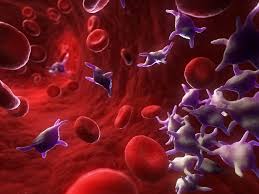Thrombocytosis is a disorder in which your body produces too many platelets.
It’s called reactive thrombocytosis or secondary thrombocytosis when the cause is an underlying condition, such as an infection.
Less commonly, when thrombocytosis has no apparent underlying condition as a cause, the disorder is called primary thrombocythemia or essential thrombocythemia. This is a blood and bone marrow disease.
Your doctor might detect thrombocytosis in a routine blood test result that shows a high platelet level. If your blood test indicates thrombocytosis, it’s important to determine whether it’s reactive thrombocytosis or essential thrombocythemia to know how to manage the condition.
Symptoms
People with thrombocytosis often don’t have signs or symptoms. Signs and symptoms of reactive thrombocytosis, if they do occur, relate to the underlying condition.
People with essential thrombocythemia might have signs and symptoms related to blood clots and bleeding, including:
- Headache
- Dizziness or lightheadedness
- Chest pain
- Weakness
- Numbness or tingling of the hands and feet
Because thrombocytosis isn’t likely to cause symptoms, you probably won’t know you have it unless a routine blood test reveals a higher than normal number of platelets. If that occurs, your doctor will try to determine the reason.
Causes
Bone marrow — spongy tissue inside your bones — contains stem cells that can become red blood cells, white blood cells or platelets. Platelets stick together, helping blood to form a clot that stops bleeding when you damage a blood vessel, such as when you cut yourself. Thrombocytosis occurs when your body produces too many platelets.
Reactive thrombocytosis:
This is the more common type of thrombocytosis. It’s caused by an underlying medical problem, such as:
- Acute bleeding and blood loss
- Cancer
- Infections
- Iron deficiency
- Removal of your spleen
- Hemolytic anemia — a type of anemia in which your body destroys red blood cells faster than it produces them, often due to certain blood diseases or autoimmune disorders
- Inflammatory disorders, such as rheumatoid arthritis, sarcoidosis or inflammatory bowel disease
- Surgery or other type of trauma
- Essential thrombocythemia
The cause of this disorder is unclear but it often appears to be connected to mutations in a variety of genes. Your bone marrow produces too many of the cells that form platelets and these platelets are often abnormal. This poses a much higher risk of clotting or bleeding complications than does reactive thrombocytosis.
🔥31 Views





